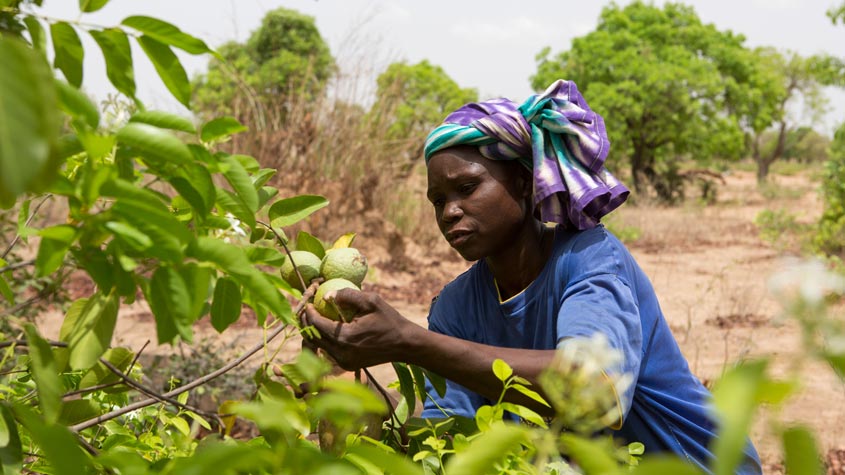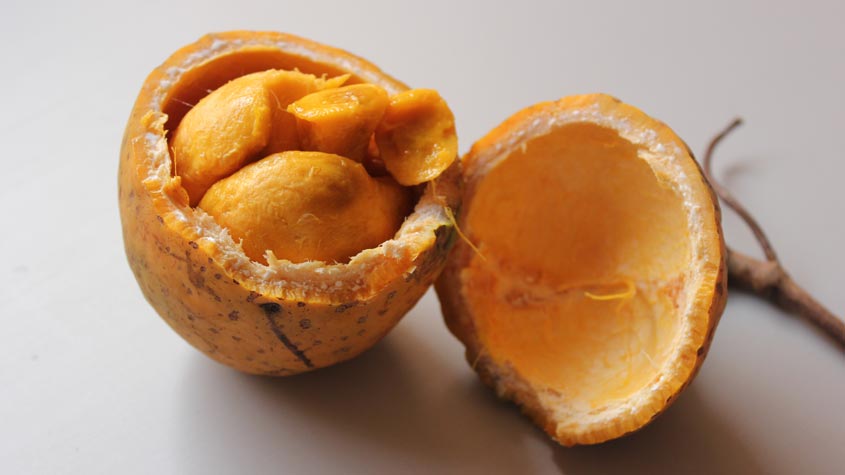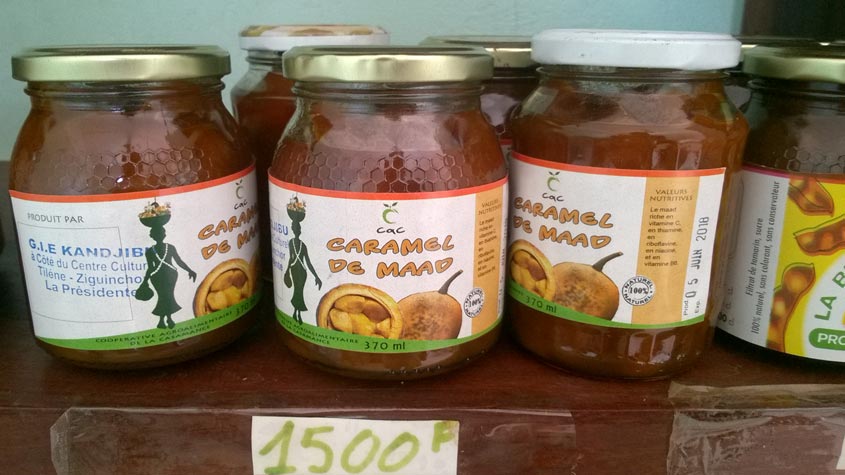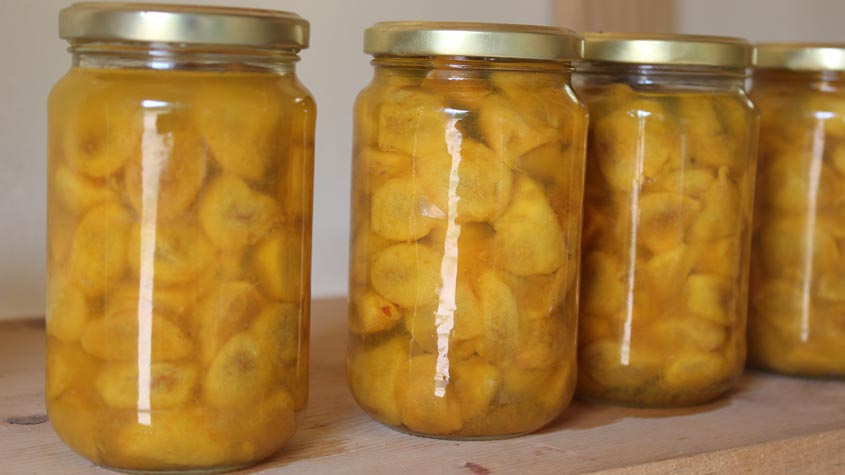By Pape-Tahirou Kanouté, agricultural economist, ETDS, Ziguinchor, Senegal, and Michele Evangelista, Lisbon Registry, WIPO
Amid the ongoing climate crisis, the need to preserve the natural environment has become a focus of growing public concern. Consumers, especially young people, are calling on governments and the private sector to actively commit to implementing strategies and policies that support environmental sustainability.

On top of this, the world’s population is expanding and is expected to reach some 9.8 billion by 2050. These factors raise significant challenges in terms of the quantity and quality of food required and the impact of agriculture and food production systems on the environment. But what does this have to do with an intellectual property right known as a geographical indication (GI)?
The answer lies in the fact that quality products originating from a given geographical area – that confers specific characteristics or quality on them or gives them a unique reputation – are highly marketable and create value for millions of producers around the world. Producers often protect and commercialize such quality origin-based products as GIs, a type of brand that generally consists of, or includes the geographical name in which a product is rooted. While environmental sustainability is not a prerequisite for acquiring a GI, the process of securing GI status can serve as a useful vehicle for promoting environmental sustainability goals.
From the outset, the local actors in the Madd de Casamance value chain recognized the pivotal importance of preserving the environment in which the fruit grows.
GIs: an incentive for effective natural resource management
A GI identifies a product that originates from a special geographical location. The quality, reputation or characteristics of that product are intrinsically linked and essentially attributable to that geographical origin. The strong link that GI-branded goods have with their terroir (the location in which they are produced (including natural and human factors) creates an incentive for producers to maintain the integrity of the natural resources responsible for producing them. This explains why well-established GIs such as, Grana Padano, Scotch Whisky, and Banano de Costa Rica, embraced “green” policies long before consumers and the public started questioning big companies and brands about the impact of their operations on the natural environment.
Such environmental awareness, however, is not confined to established GIs. Producers of goods with the potential to qualify for GI protection, such as the fruit, Madd de Casamance, are also working to ensure that sustainability considerations are embedded in the regulations and control mechanisms they are establishing to govern harvesting practices and production of derivative products.
About Madd de Casamance
Madd (or Saba senegalensis) is a wild species of fruit, a berry with a hard, yellow peel that is found predominantly in the woodlands and certain savannahs of Burkina Faso, Senegal, Guinea, Guinea Bissau, Mali, Ghana and Côte d’Ivoire. The plant is a climbing vine with tendrils that allow it to cling to the trunks and branches of trees in the forest where it grows wild. Its yellowish-white and greenish-white blooms are highly fragrant and its ovoid fruits, orange when ripe, are up to 10 centimeters long and 8 centimeters wide and full of pulp-coated seeds.
The fruits are rich in carbohydrates and vitamin A, K and C. Eaten fresh, the seeds have a tart flavor and are typically seasoned with sugar, salt or pepper or used as a condiment. The fruits are also used to make juices, syrup and preserves. Madd de Casamance, which grows in the Casamance region of Southern Senegal, is widely reputed for its flavor and medicinal properties and has been commercialized with some success by women, in particular, in cities like Dakar. It has great potential to become a flagship GI for the region, and the first GI in Africa for a wild product.

Registering Madd de Casamance as a GI: the journey
The process of registering Madd de Casamance as a GI began in 2017, with a sub-regional conference organized by the Food and Agricultural Organization of the United Nations (FAO) and the World Intellectual Property Organization (WIPO) in collaboration with the African Intellectual Property Organization (OAPI) and the Senegalese Agency of Industrial Property and Innovation (ASPIT). A study presented at that meeting during the Conference, assessed the potential of the fruit as a GI and the level of interest among local producers to engage in the GI registration process. The study acknowledged the reputation and distinctive characteristics of the fruit and its derivative products. It also identified other critical factors to support its registration as a GI, including the need to define the geographical boundaries of the area of production and to establish the traceability of the fruit and derivative products identified by the GI.
Local producers confirmed their interest in protecting the fruit and in 2019, with the support of the National Agency for Agricultural and Rural Consulting (ANCAR), ASPIT, FAO, OAPI and WIPO, they formally launched a pilot project for the development and registration of Madd de Casamance as a GI. The project also has the potential to support the development of the region of Casamance in line with the objective of Senegal’s Decentralization Act III to organize the country into viable, competitive and sustainable development territories by 2022.
Community organization: strength in numbers
From the beginning of the process, local actors such as ETDS (Economie Territoires et Développement Services), a Senegalese non-governmental organization, started working with local producers – mostly women initially – who were interested in adding value to the goods they derived from the Madd fruits harvested in the region.
ETDS’ first order of business was to support the local producers – who would be responsible for governing the GI once registered – in establishing a formal association to manage and administer the GI. These efforts culminated in the launch in November 2019, of APPIGMAC (Association pour la Protection et la Promotion de l’Indication Géographique Madd de Casamance). The objective of the Association is to bring together all those engaged in the harvest, production and distribution of the fruit from the region and is responsible for protecting and promoting Madd de Casamance and its associated products.
Bringing the local producers together to establish the APPIGMAC makes it possible for them to exchange ideas and agree on common strategies for the management of their GI value chain. For example, it enables them to develop and implement a quality assurance scheme to ensure the fruits are harvested under specific conditions and meet required standards. APPIGMAC is also working to identify new markets and schemes to boost the value and sale of its distinctive products.

Producers embrace environmental sustainability
Recognizing the pivotal importance of preserving the environment in which Madd de Casamance thrives, local producers have worked from the very beginning of the GI registration process to ensure that their harvesting and production practices are governed by sustainability considerations. Why? Because the forests in the Casamance region are under threat from population growth, urban sprawl and unfettered exploitation of natural resources. Over-exploitation of the forests, fires, drought, and overgrazing have heightened the risk of flooding and erosion, causing the disappearance of many animal species and posing a real threat to the production of Madd de Casamance.
In light of this, local collectors and processors across the Madd de Casamance value chain have agreed on clear methods of forest exploitation to restore and maintain the integrity of the original forest ecosystem. These best practices balance natural resource exploitation with the need to regenerate the forests where the fruit grows and form part of the mandatory requirements (the book of specifications) that each producer will have to respect if they wish to label their products with the GI when registered. The Association hopes to complete the registration process before the end of 2020.
GIs have the potential to support efforts to scale-up environmentally sustainable practices, which might otherwise be more difficult to achieve with individual companies.
Buoyed by the positive results flowing from this approach, ETDS is working with local communities to strengthen a number of other emerging community-based forest management mechanisms. For example, in 2019, thanks to the efforts of volunteers to promote better forest management, the department of Oussouyé (in the Casamance region) was the only department in Senegal to record no forest fires.
The experiences in managing Madd de Casamance are also inspiring other communities to take positive environmental action. For example, inhabitants of Dablé, a neighborhood in the village of Thiobon, in the department of Bignona, have established a committee and agreed to only harvest the wild fruit, ditakh (Detarium senegalese), which is an important part of the local economy, when it is ripe and on weekends. Anyone infringing these rules risks being barred from the forest and having any harvested fruit confiscated. The community is also employing young people to supervise the forest and ensure the rules are applied correctly. Similarly, with the support of ETDS, various local associations are working to regenerate the forests in the area around the village of Sindian.
ETDS is keen to identify new partnerships to support other reforestation activities in the region.

Supporting sustainability and empowering communities with GIs
Madd de Casamance is an interesting example of how GIs can support the environmental, social and economic dimensions of sustainability and the transition to a green future. As a collective endeavor, GIs have the potential to support efforts to scale-up environmentally sustainable practices, which might otherwise be more difficult to achieve with individual companies.
Moreover, economic actors in GI value chains – producers, processors and distributers – are used to independent audits, such as production/product quality audits. Unlike many other products, GI-protected products are subject to regular controls to ensure that their associated qualities are delivered to consumers. As such, adapting GI-recognized products to sustainability audits may be relatively easy.
To maintain the reputation and characteristics of quality goods originating from a given area, producers need to recognize the importance of effectively managing the resources that shape the very qualities of their products, especially when it comes to natural and agricultural products and foodstuffs. This is not just a moral obligation toward the environment; it is a matter of economic self-interest. Sustainable production of these goods, and indeed the social and economic well-being of the communities responsible for producing them, hinges on effective and sustainable land and natural resource management practices.
In the case of Madd de Casamance, which is also a valuable source of nutrition for the community, securing GI status is not only supporting the community’s environmental goals, it is also galvanizing the empowerment of young people and women.
Young people, for example, are typically responsible for gathering the fruit. They use their earnings to finance their studies. For their part, women play a key role in processing and selling the juices, syrups and preserves derived from the fruit as well as in building the reputation of their products and establishing its value chain. In fact, women took the first steps towards seeking GI status for Madd de Casamance.
GI certification is a collective effort involving many actors along the value chain, and insofar as the entire community is committed to the same goals, the impact of collective action in achieving those goals is heightened.
In the case of Madd de Casamance, and, indeed, various other GI-protected products, we see that when environmental sustainability is identified as a shared goal, the community organization required to secure GI status can be a powerful vehicle in responding to the sustainability challenges and environmental concerns of our time.